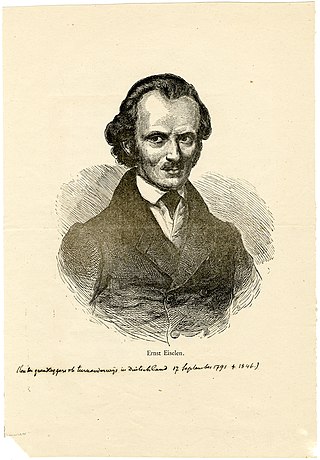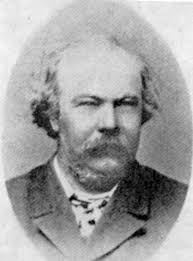
Gymnastics is a type of sport that includes physical exercises requiring balance, strength, flexibility, agility, coordination, artistry and endurance. The movements involved in gymnastics contribute to the development of the arms, legs, shoulders, back, chest, and abdominal muscle groups. Gymnastics evolved from exercises used by the ancient Greeks that included skills for mounting and dismounting a horse, and from circus performance skills.

Turners are members of German-American gymnastic clubs called Turnvereine. They promoted German culture, physical culture, and liberal politics. Turners, especially Francis Lieber (1798–1872), were the leading sponsors of gymnastics as an American sport and the field of academic study.

Calisthenics or callisthenics (/ˌkælɪsˈθɛnɪk/) is a form of strength training that utilizes an individual's body weight as resistance to perform multi-joint, compound movements with little or no equipment.

The gymnasium in Ancient Greece functioned as a training facility for competitors in public games. It was also a place for socializing and engaging in intellectual pursuits. The name comes from the Ancient Greek term gymnós, meaning "naked" or "nude". Only adult male citizens were allowed to use the gymnasia.
Physical culture, also known as body culture, is a health and strength training movement that originated during the 19th century in Germany, the UK and the US.
Joseph Hubertus Pilates was a German-born physical trainer, writer, and inventor. He is credited with inventing and promoting the Pilates method of physical fitness. He patented a total of 26 apparatuses in his lifetime.

Georges Hébert was a pioneering physical educator in the French military who developed a system of physical education and training known as "la méthode naturelle" and a more wide training program known as Hebertism. Hébert combined the training of a variety of physical capacities with the training of courage and ethics.

Pehr Henrik Ling pioneered the teaching of physical education in Sweden. Ling is credited as the father of Swedish massage.

The following outline is provided as an overview of and topical guide to exercise:
A fitness boot camp is a type of group physical training program that may be conducted by gyms, personal trainers or other organizations. These programs are designed to build strength and fitness through a variety of types of exercise. The activities and format may be loosely modeled on aspects of fitness training used in the military and the trainers themselves may be former military personnel.

Johann Christoph Friedrich GutsMuths, also called Guts Muth or Gutsmuths, was a teacher and educator in Germany, and is especially known for his role in the development of physical education. He is thought of as the "grandfather of gymnastics" – the "father" being Friedrich Ludwig Jahn. GutsMuths introduced systematic physical exercise into the school curriculum, and he developed the basic principles of artistic gymnastics.

Karl Adolf Spieß was a German gymnast and educator who contributed to the development of school gymnastics for children of both sexes in Switzerland and Germany.

Ernst Wilhelm Bernhard Eiselen was a German gymnast and a promoter of the Jahn style of gymnastics.

John Hulley was an English gymnastics and athletics entrepreneur who encouraged public participation in physical education to improve health and well-being, and was one of the instigators of the Olympic movement in Britain. At his Liverpool Gymnasium in 1865 he established the National Olympian Association, the forerunner of the British Olympic Association. With William Penny Brookes and Ernst Georg Ravenstein, he organised the first National Olympian Games in 1866. He organised a series of Assault-at-Arms gymnastic events in Liverpool and Manchester. He organised six Olympic Festivals between 1862 and 1867 in Liverpool and Llandudno. With Robert B. Cummins, he exposed American magicians the Davenport brothers. He introduced the velocipede into Liverpool.

New Orleans Athletic Club (NOAC) is an American athletic organization founded in 1872, making it the second-oldest such institution in the United States. It is located at 222 North Rampart Street in New Orleans, Louisiana.

Fitness culture is a sociocultural phenomenon surrounding exercise and physical fitness. It is usually associated with gym culture, as doing physical exercises in locations such as gyms, wellness centres and health clubs is a popular activity. An international survey found that more than 27% of world total adult population attends fitness centres, and that 61% of regular exercisers are currently doing "gym-type" activities. Getting and maintaining physical fitness has been shown to benefit individuals' inner and outer health. Fitness culture has become highly promoted through modern technology and from the rising popularity of social media platforms.

Outdoor fitness consists of exercise undertaken outside a building for the purpose of improving physical fitness. It contrasts with exercise undertaken inside a gym or health club for the same purpose. The activity may be undertaken in a park, in the wilderness, or other outdoor location. The popularity of outdoor fitness grew rapidly in the second-half of the twentieth century and grew as a commercial consumer market in the twenty-first century.

Physical training has been present in human societies throughout history. Usually, it was performed for the purposes of preparing for physical competition or display, improving physical, emotional and mental health, and looking attractive. It took a variety of different forms but quick dynamic exercises were favoured over slow or more static ones. For example, running, jumping, wrestling, gymnastics and throwing heavy stones are mentioned frequently in historical sources and emphasised as being highly effective training methods. Notably, they are also forms of exercise which are readily achievable for most people to some extent or another.

Archibald MacLaren or Maclaren was a Scottish fencing master, gymnast, educator and author who in 1858 opened a well-equipped gymnasium at the University of Oxford where from 1860 to 1861 he trained 12 sergeants and their officer who then disseminated his training regimen into the newly-formed Army Gymnastic Staff (AGS) for the British Army. The AGS was later to become the Royal Army Physical Training Corps. His training scheme was also later adopted by several British public schools including Rugby School in 1872 and universities. He wrote a number of books on physical training theory and practice.





















